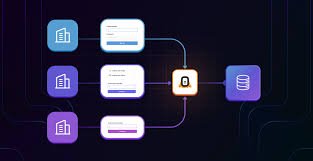
Implementing multi-tenancy authentication in full-stack applications involves providing secure access to resources for multiple tenants, such as organizations or users, within a single application environment. This approach enables efficient management of shared resources while ensuring data isolation and privacy between tenants. In this article, we’ll explore the key considerations and strategies for implementing multi-tenancy authentication in full-stack applications.
Multi-tenancy authentication is increasingly relevant in today’s cloud-based and SaaS (Software as a Service) environments, where a single application instance serves multiple clients or user groups. Each tenant typically has its own set of users, data, and access permissions, requiring a robust authentication mechanism to ensure secure interactions and data segregation.
The main objectives of multi-tenancy authentication include:
1. Security: Ensuring that each tenant’s data and resources are securely isolated from others, preventing unauthorized access and data leakage.
2. Scalability: Accommodating a growing number of tenants and users while maintaining performance and availability.
3. Flexibility: Supporting diverse authentication requirements and configurations for different tenants, such as custom authentication providers or identity management systems.
4. Compliance: Meeting regulatory and industry standards for data privacy, security, and access control, which may vary across different tenant environments.
By understanding the principles and best practices of multi-tenancy authentication, developers can build robust and scalable authentication systems that meet the needs of diverse tenant environments while ensuring security and compliance. Let’s delve into the key considerations and strategies for implementing multi-tenancy authentication in full-stack applications.
Key Considerations for Multi-Tenancy Authentication
1. Data Isolation: One of the primary challenges in multi-tenancy authentication is ensuring data isolation between tenants. Each tenant’s data should be logically separated and inaccessible to other tenants. This requires careful design of database schemas, access controls, and data encryption mechanisms.
2. Tenant Identification: A robust multi-tenancy authentication system should accurately identify the tenant associated with each user request. This can be achieved through various means such as subdomain-based tenancy identification, unique identifiers in the request headers, or explicit tenant selection during login.
3. Authentication Mechanisms: Multi-tenancy authentication systems should support a variety of authentication mechanisms to accommodate the diverse requirements of different tenants. This may include username/password authentication, social login (OAuth), single sign-on (SSO), multi-factor authentication (MFA), and integration with external identity providers.
4. Authorization and Access Control: Once authenticated, users must be authorized to access resources based on their roles, permissions, and the tenancy context. Role-based access control (RBAC) or attribute-based access control (ABAC) mechanisms can be used to enforce fine-grained access policies tailored to each tenant’s requirements.
Strategies for Implementing Multi-Tenancy Authentication:
1. Tenant-Aware Authentication Middleware: Implement middleware components in the application stack to intercept incoming requests, extract tenant information, and enforce authentication and authorization policies based on the tenant context. This middleware should seamlessly integrate with the application framework and underlying authentication services.
2. Centralized Identity Management: Implement a centralized identity management system that supports multi-tenancy and federated authentication. This system should manage user identities, authentication tokens, and access policies across all tenants while providing isolation and segregation of tenant data.
3. Tenant-Specific Authentication Configurations: Allow tenants to configure their authentication settings independently, such as choosing authentication providers, defining password policies, and configuring session management parameters. Provide an administrative interface for managing tenant-specific authentication configurations.
4. Secure Token Management: Use secure token-based authentication mechanisms such as JSON Web Tokens (JWT) or OAuth tokens to authenticate users and authorize access to resources. Ensure proper validation, expiration, and revocation of tokens to mitigate security risks such as token leakage or replay attacks.
By implementing these strategies and considering the key considerations outlined above, developers can build robust and secure multi-tenancy authentication systems for full-stack applications. These systems provide flexible, scalable, and compliant authentication solutions that meet the needs of diverse tenant environments.
Tenant-Specific Authentication Configurations:
1. Customizable Authentication Policies: Provide tenants with the ability to define their own authentication policies based on their security requirements and compliance standards. This includes settings such as password complexity rules, session timeout durations, and multi-factor authentication (MFA) options. By allowing tenants to customize these policies, the authentication system can adapt to the unique needs of each tenant.
2. Tenant-Specific Identity Providers: Support integration with multiple identity providers (IdPs) and allow tenants to configure their preferred IdPs for user authentication. This enables tenants to leverage existing authentication infrastructure and identity federation services while maintaining control over user access to their resources.
3. White-Labeling and Branding: Offer white-labelling capabilities that allow tenants to customize the authentication user interface with their branding, logos, and colours. This enhances the user experience and reinforces the tenant’s brand identity throughout the authentication process.
4. Localization and Internationalization: Support localization and internationalization features to accommodate tenants operating in different regions and languages. This includes translating authentication prompts, error messages, and user interfaces into the preferred language of each tenant’s user base.
Secure Token Management:
1. Token Issuance and Validation: Implement robust token issuance and validation mechanisms to ensure the integrity and authenticity of authentication tokens. Use industry-standard token formats such as JSON Web Tokens (JWT) and employ cryptographic algorithms to sign and verify tokens securely.
2. Token Expiration and Renewal: Set appropriate expiration times for authentication tokens to limit their lifespan and reduce the risk of unauthorized access. Implement token renewal mechanisms to allow users to obtain new tokens without requiring repeated authentication, improving usability while maintaining security.
3. Token Revocation and Blacklisting: Implement mechanisms to revoke and blacklist authentication tokens in case of security incidents or user account compromise. Maintain a centralized token blacklist or use token introspection endpoints to validate token status during authentication requests.
4. Token Scoping and Permissions: Use token scoping and permissions to control the scope of access granted to authenticated users. Include information about the user’s roles, permissions, and tenant context within the token payload to enforce fine-grained access control policies at the application level.
By addressing these aspects of tenant-specific authentication configurations and secure token management, developers can build robust and flexible multi-tenancy authentication systems that meet the diverse needs of tenants while ensuring the security and integrity of user authentication processes.
Auditing and Logging:
1. Tenant-Specific Audit Trails: Maintain separate audit trails for each tenant to track authentication events, access attempts, and security-related activities within their respective environments. This ensures transparency and accountability while enabling tenants to monitor and audit user authentication activities for compliance purposes.
2. Granular Logging and Reporting: Provide tenants with granular logging and reporting capabilities to generate custom reports and insights based on their specific authentication and access patterns. This includes detailed logs of authentication attempts, failed login attempts, successful authentications, and access control decisions.
3. Real-time Monitoring and Alerting: Implement real-time monitoring and alerting mechanisms to notify tenants of suspicious or anomalous authentication activities, such as multiple failed login attempts or unusual access patterns. This proactive approach enables tenants to respond swiftly to potential security threats and mitigate risks effectively.
4. Integration with SIEM Solutions: Integrate with Security Information and Event Management (SIEM) solutions to aggregate and analyze authentication logs from multiple tenants in a centralized platform. This facilitates correlation analysis, threat detection, and incident response across the entire multi-tenant environment, enhancing security posture and compliance.
Continuous Improvement and Compliance:
1. Security Patching and Updates: Ensure that the authentication system is regularly updated with security patches and enhancements to address emerging threats and vulnerabilities. Implement automated patch management processes to streamline the deployment of updates across all tenant environments while minimizing downtime and disruption.
2. Regular Security Audits and Assessments: Conduct regular security audits and assessments to evaluate the effectiveness of the multi-tenancy authentication solution and identify areas for improvement. Engage third-party security experts or auditors to perform independent reviews and validate compliance with industry standards and regulatory requirements.
3. Compliance with Data Protection Regulations: Ensure compliance with data protection regulations such as GDPR, HIPAA, or CCPA by implementing robust security controls, data encryption mechanisms, and privacy-preserving practices within the authentication system. Adhere to data residency requirements and data handling guidelines specific to each tenant’s jurisdiction.
4. User Education and Awareness: Provide tenants with resources, training materials, and best practices for promoting user education and awareness regarding secure authentication practices. Empower users to adopt strong password policies, enable multi-factor authentication (MFA), and recognize common phishing scams or social engineering tactics.
By prioritizing these aspects of auditing and logging, as well as continuous improvement and compliance, developers can ensure that multi-tenancy authentication systems remain secure, compliant, and resilient in the face of evolving threats and regulatory requirements.
Conclusion
In conclusion, implementing multi-tenancy authentication in full-stack applications requires a comprehensive approach that addresses the unique security and compliance needs of each tenant. By leveraging tenant-specific audit trails, granular logging and reporting, real-time monitoring and alerting, and integration with SIEM solutions, developers can enhance security posture and facilitate compliance with regulatory requirements. Furthermore, a commitment to continuous improvement through security patching, regular audits, and compliance with data protection regulations is essential to mitigate risks and maintain trust with tenants. By fostering user education and awareness, organizations can empower users to adopt secure authentication practices and contribute to overall security posture. To gain proficiency in developing secure full-stack applications with multi-tenancy authentication, enrolling in a Full Stack Developer Training course in Delhi, Surat, goa, Noida, etc, can provide the necessary skills and knowledge to succeed in today’s dynamic IT landscape.




One Comment